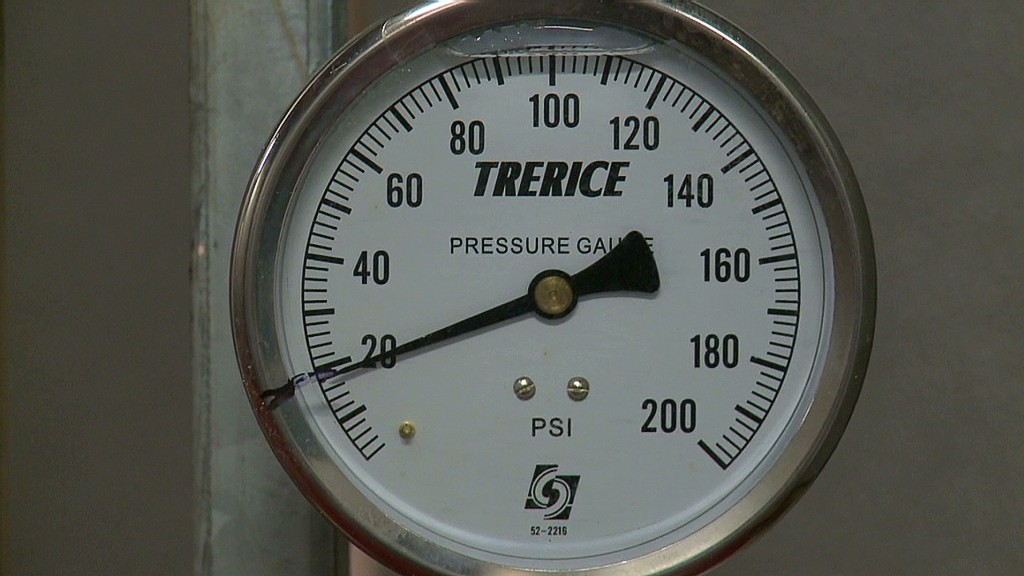
Some of New York's most high-profile and high-tech buildings are resorting to an ancient method to keep cool.
Skyscrapers including Rockefeller Center, Bank of America (BAC) Tower, Goldman Sachs (FADXX), Morgan Stanley (AACXX) and Credit Suisse (CCRSX) are now using ice to supplement their air-conditioning.
The buildings have installed massive ice-making tanks in their basements or rooftops. Water is frozen overnight to produce gigantic blocks of solid ice, when electricity is the cheapest, and melted during the day, when electricity is most expensive. The ice is used to chill air, which is then circulated throughout the building to help cool the occupants.
This freezing and melting process is called "thermal storage." By shifting electricity use to off-peak hours, costs can be brought significantly lower than using power during a normal weekday.
Equipped with 41 cylindrical tanks -- each holding 2,200 gallons of water -- Rockefeller Center's giant ice blocks help the 8 million square foot complex to stay cool, even during the recent heat wave that pushed power demand in New York City to a record high.
"[Using ice] helps reduce cooling energy costs by as much as 40 percent in commercial buildings," said Paul Valenta, Vice President of Sales and Marketing at Calmac, the largest thermal energy storage equipment maker based in New Jersey, which manufactured Rockefeller Center's ice tanks.
Related: Global CO2 emissions at record high in 2012
On average, an ice tank measures about 8 feet high and 7 feet wide, weighs 16,900 pounds, and costs from $15,000 to $30,000. Each tank typically requires the same amount of floor space as a water heater requires in a 2,000 square foot home, according to the company.
"It requires about 150 to 400 pounds of ice to cool down a person in an office building every day," said Mark MacCracken, chief executive of Calmac.
The thermal storage idea has been around for about 10 to 15 years in New York, but the market has been slow in adopting the new technology due to a lack of public awareness.
"Ice storage systems only make up 1% of the air-conditioning market. Most large buildings are still using conventional electric chillers," said Jasmine Williams, marketing manager at Calmac.
Related: Coal companies hit by oversupply, Obama
Other manufacturers with similar products include Trane, a New Jersey-based subsidiary of Ingersoll Rand (IR), Baltimore Aircoil Company, and Colorado-based Ice Energy.
There are approximately 4,000 ice storage systems in use in the United States and 8,000 worldwide, including a McDonald's (MCD) franchise in Geneva, Switzerland, JC Penney's (JCP) corporate headquarters in Plano, Texas, and the Tuntex Sky Tower in Kaohsiung, Taiwan, according to Calmac.
"Ice storage is a clever idea that makes a lot of sense. It can help to reduce peak load, mitigate energy system stress, and stabilize the electrical grid in New York," said Laurie Kerr, director of the city energy project at Natural Resources Defense Council, an environmental advocacy group based in New York.
Kerr said the most significant benefits are that the storage system is able to reduce air pollution and help stabilize the electrical grid. By shifting the electricity use to night time, fewer of the dirtiest plants such as coal and oil plants will be needed, reducing emissions of air pollutants; also it help keeps electrical demand from exceeding supply by reducing energy use during the hottest hours.
In comparison, the ice cooling approach has less impact on global warming, since shifting to nighttime power leads to less dramatic reductions in carbon emissions, she said.

